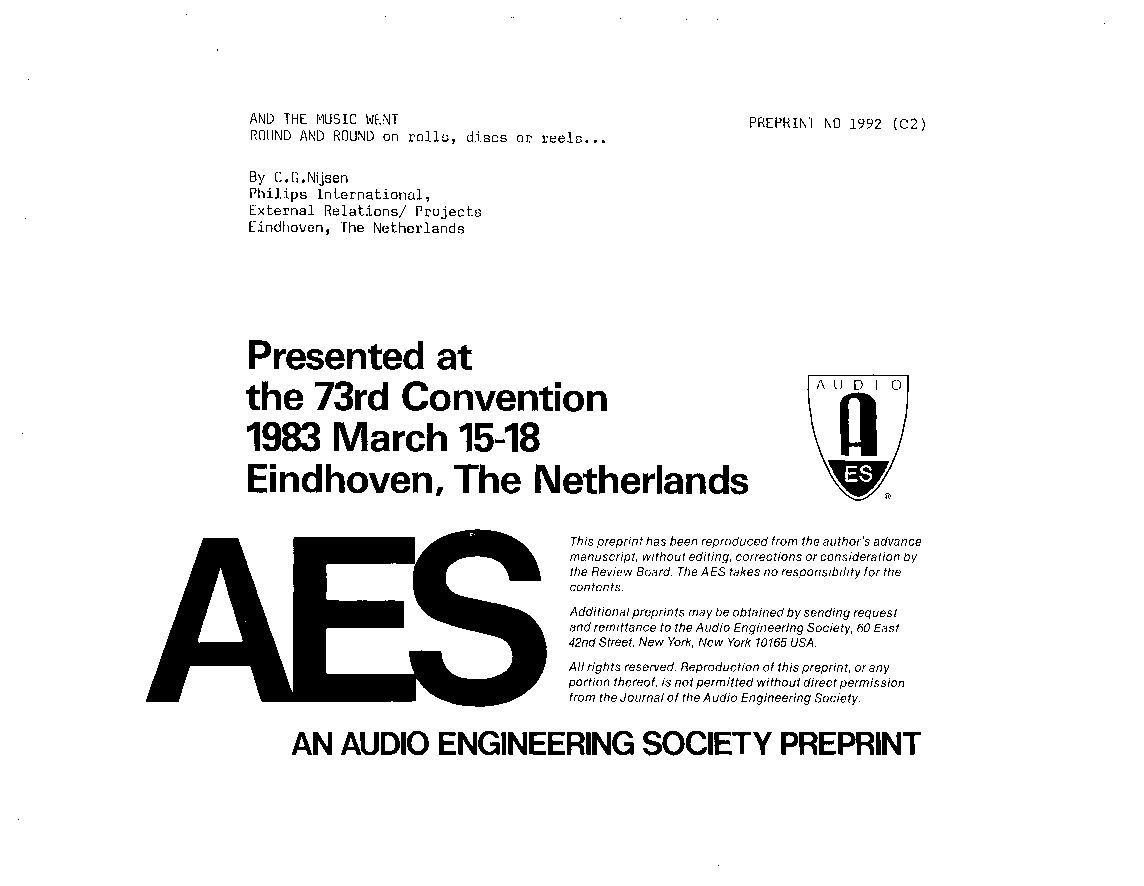Home / Publications / E-library page
You are currently logged in as an
Institutional Subscriber.
If you would like to logout,
please click on the button below.
Home / Publications / E-library page
Only AES members and Institutional Journal Subscribers can download
There is no doubt that the introduction of the digital compact disc is the most remarkable step in sound quality improvement since electrical recording, the long playing record, and the hi-fi stereo cassette magnetic tape deck. Such evolutions in sound reproduction media make you think about all the years when mechanical music impulses were registered either on revolving cylinders, on flat discs, or on tapes or films wound on a reel. How did these sound carriers evolve and will the next phase be a black box in which solid state memories put a final end to the visual movement of the sound track? This bird`s eye view is an attempt to present a balanced survey of the role played by important inventors and companies in distant parts of the world. We meet interesting, now little-known contributions to the achievement of "living room presence" or "highest fidelity" such as the electro-pneumatic reproducing piano and the electromechanical Philips-Miller system, the first tape machine with optical readout of a sound signal.
Author (s): Nijsen, C. G. (Kees)
Affiliation:
Philips International, External Relations / Projects, Eindhoven, The Netherlands
(See document for exact affiliation information.)
AES Convention: 73
Paper Number:1992
Publication Date:
1983-03-06
Import into BibTeX
Permalink: https://aes2.org/publications/elibrary-page/?id=11770
(9805KB)
Click to purchase paper as a non-member or login as an AES member. If your company or school subscribes to the E-Library then switch to the institutional version. If you are not an AES member Join the AES. If you need to check your member status, login to the Member Portal.

Nijsen, C. G. (Kees); 1983; And the Music Went Round and Round on Rolls, Disks or Reels [PDF]; Philips International, External Relations / Projects, Eindhoven, The Netherlands; Paper 1992; Available from: https://aes2.org/publications/elibrary-page/?id=11770
Nijsen, C. G. (Kees); And the Music Went Round and Round on Rolls, Disks or Reels [PDF]; Philips International, External Relations / Projects, Eindhoven, The Netherlands; Paper 1992; 1983 Available: https://aes2.org/publications/elibrary-page/?id=11770